North Korea. Part I. Main DetailsMapApril 28 — May 6, Juche year 95 (2006) Unlike the original Iron Curtain, which ran vertically along the borders, North Korea’s runs horizontally, uniformly blanketing the entire territory of the country. 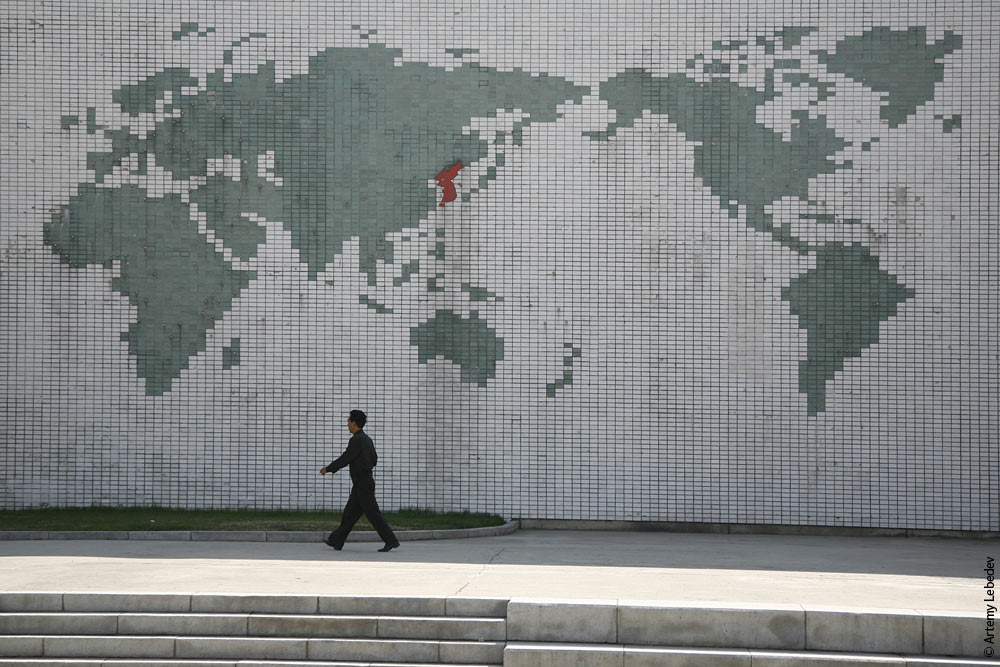 You have to hand in your cell phone when you arrive at the airport. They put it in a little cloth pouch and take it away somewhere, giving you a rice paper ticket in exchange. The phone is returned to you when you fly out. There’s no roaming here, obviously, and the phone shows no signal. But if you set the network selection mode to manual, the operator PRK 03 comes up. Which means that cell service does exist here, although I never saw a single person with anything remotely resembling a cell phone. Oddly enough, you’re free to enter the country with cameras and laptops. Apparently, they’ve never heard of cell phones in the form of a network card that plugs into a computer. I hope the reader will forgive me for the questionable quality of some of the photos—all of them except for sights at scheduled stops were shot from the window of a car moving at 100 km/h. There’s no Internet in the country either, naturally (there’s an intranet). I saw a computer three times: at passport control, at the hotel, and at the model home of a model farmworker at a model collective farm. Because this is pretty much the only home in North Korea a foreigner might visit, the country’s publicists have made sure to furnish the living room with something resembling a computer (a system unit made by Digital—a company that went out of business about eight years ago, an HP keyboard, a mysterious monitor with speakers). I checked—they hadn’t bothered to at least plug in the computer for the sake of appearances. 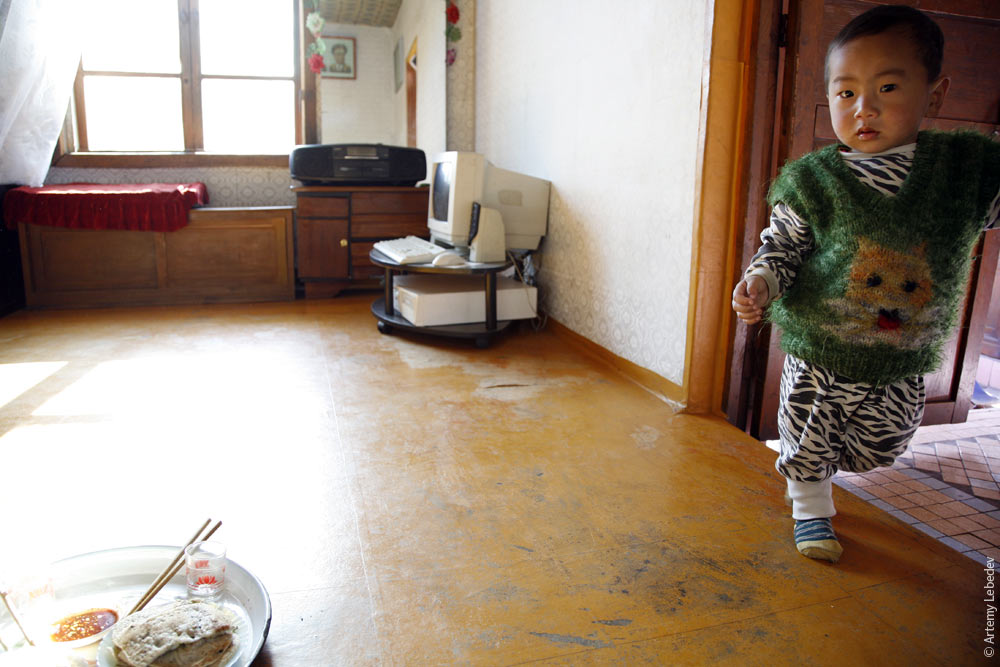 Upon arriving, every tourist is assigned a driver and a tour guide who speaks their language. You can’t go anywhere without them at your side. In addition to the guide, I also got a student intern. And so I was stuck traveling around with the three of them the entire week. 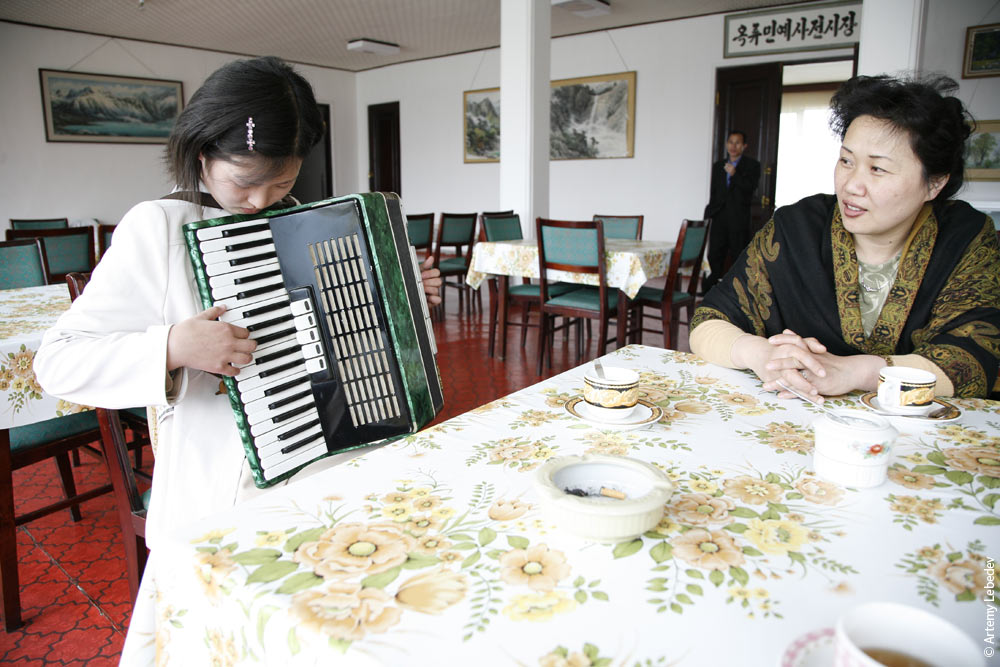 You’re not allowed to leave the hotel unescorted. Taking a walk around the city is completely out of the question. The entire itinerary has been put together in advance and consists of seeing a few sights each day. Depart around 8 a.m., see a sight, lunch around noon, see another sight or two, return to the hotel by 6–7 p.m., dinner, sleep. 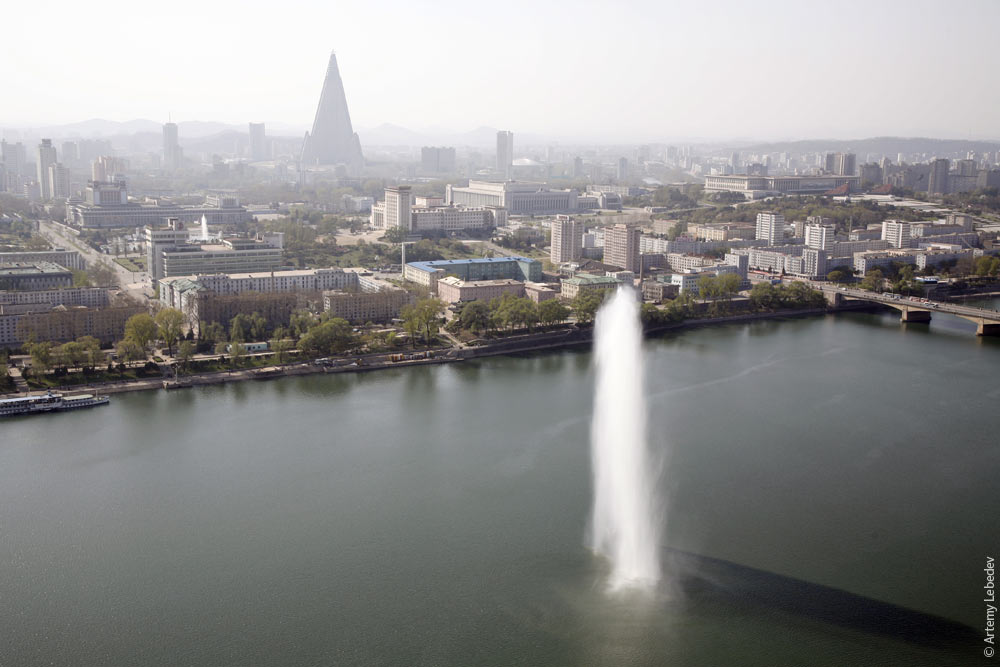 Every single thing a foreigner might see is painstakingly considered in advance. If you’re having lunch in the city, the restaurant will be in a location from which you can’t see any city life—only a fence, trees, mountains, etc. The impression a tourist leaves with after visiting the country is of utmost importance to the host party. Every myth about how terrible everything is in North Korea must be dispelled. The TV at the hotel in Pyongyang has BBC, a couple of Chinese channels, and NTV (a Russian channel)—so you can’t complain about a lack of free speech. They feed you very hearty meals—so you can’t complain about hunger. The local equivalent of the Russian phrase “in the underpass” (referring to underground pedestrian walkways filled with kiosks and vendors) is “under the bridge.” The main bulk of city life takes place under the bridges. This is where independent vendors sell cigarettes and some sort of food, where all the beggars hang out. While things are still more or less decent under the bridge in the capital, in rural areas these spots are as crowded as a train station. I noticed this completely by accident, when the highway curved and revealed a view that’s normally completely invisible from the road. Elderly women with plastic bags can be seen gathering some sort of grass in Pyongyang’s parks. They don’t exactly look like Young Pioneers clearing weeds. My guide explained that they’re “collecting grass for their pet rabbits.” At one point, I tried to turn off the tried-and-true path, quickened my pace to break away from the guides, and headed into the depths of a residential block. I had barely managed to walk twenty meters when I was stopped by a secret police agent on a bicycle, who explained that I wasn’t allowed to go here and that the road was over there.  Every place where foreigners usually make stops (for example, a tea house on the way to another city) has a hard currency store like the Beryozka or Torgsin ones that used to exist in the USSR. They sell “familiar” goods: Chinese Sprite, Japanese canned iced coffee, beer, candy bars, cigarettes, and so on. At one such store on the coast of the Sea of Japan, I even discovered two bags of Lay’s chips with a 2001 expiration date. 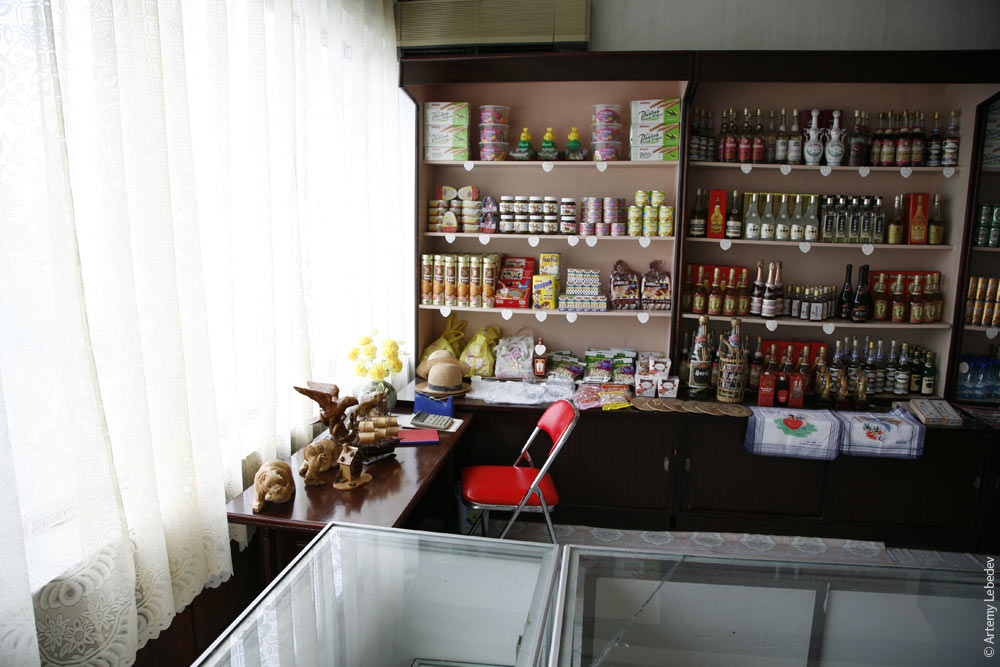 I don’t know how Koreans buy things, but making a purchase at these “shops for trade with foreigners” works like this. You select your items, the salesperson writes out a check, you take the check to the cashier’s booth, which has slots that are too small to fit a hand through, and pay with currency (euros, dollars, and yuan are accepted). The cashier stamps the check and keeps half, you take the other half to the salesperson and collect your purchase. 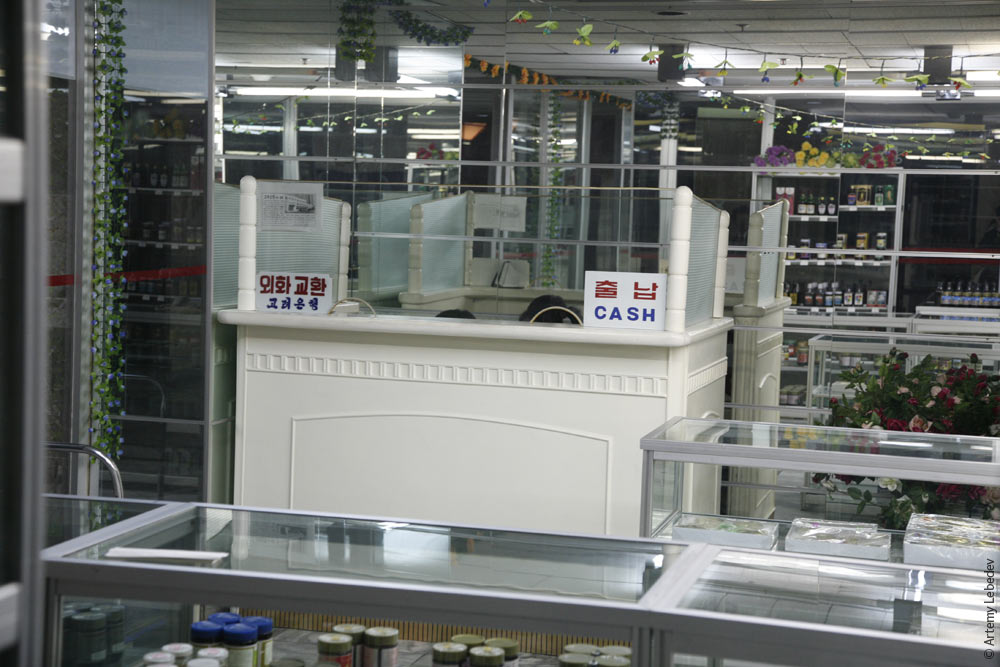 The street vending that can be observed is more modest. Mostly it’s lemonade. Foreigners are given disposable cups; citizens make do with porcelain mugs that are rinsed in a bucket or bowl after each use (the old Soviet soda machines with reusable glasses created the illusion of being hooked up to running water, but there’s nothing like that here). In places where they don’t expect foreigners, only the mugs are available. 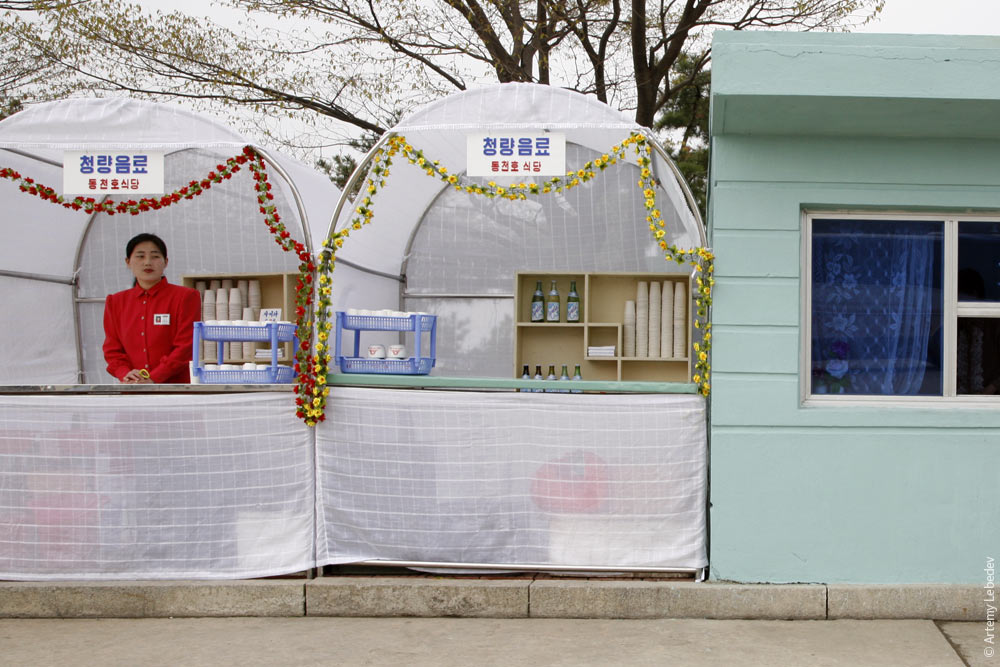 Sometimes you’ll see people selling a vegetable of some kind on the street. I wasn’t able to go inside any of the regular grocery stores—tourists don’t get to make stop requests. The door on the right in this photo is the entrance to a store, which was closed shut as soon as my presence was noticed. The only reason I was able to be here at all is because there’s a sanctioned bookstore directly behind my back (where you can smoke while you browse the books). 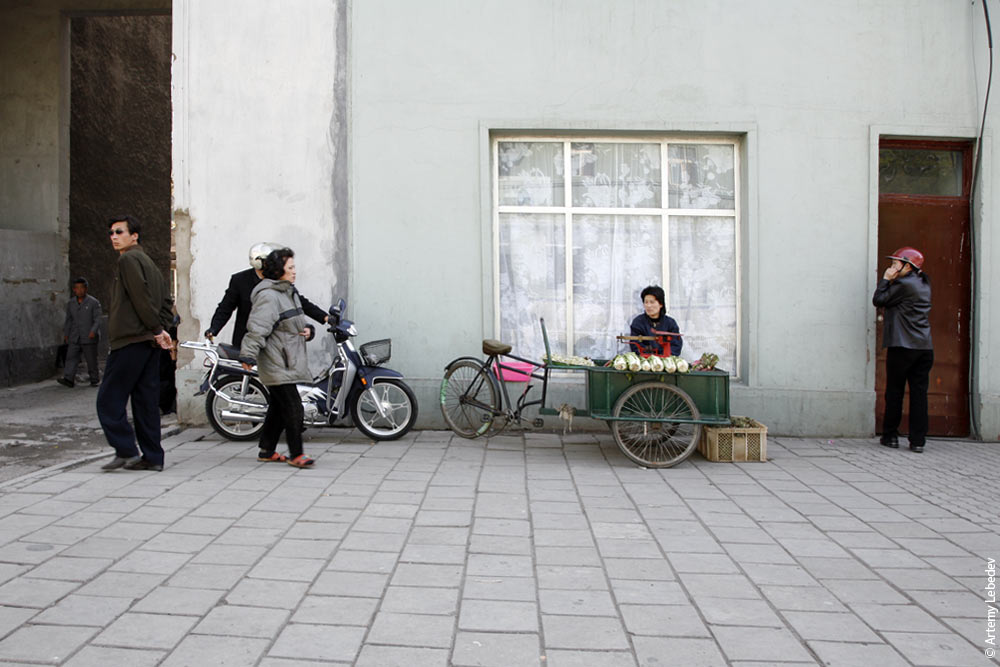 To a North Korean, a white person might as well be a black guy in head-to-toe pink, he immediately draws attention to himself. The locals can’t seem to believe they’ve actually met a real live foreigner. People’s reaction always looks like this: 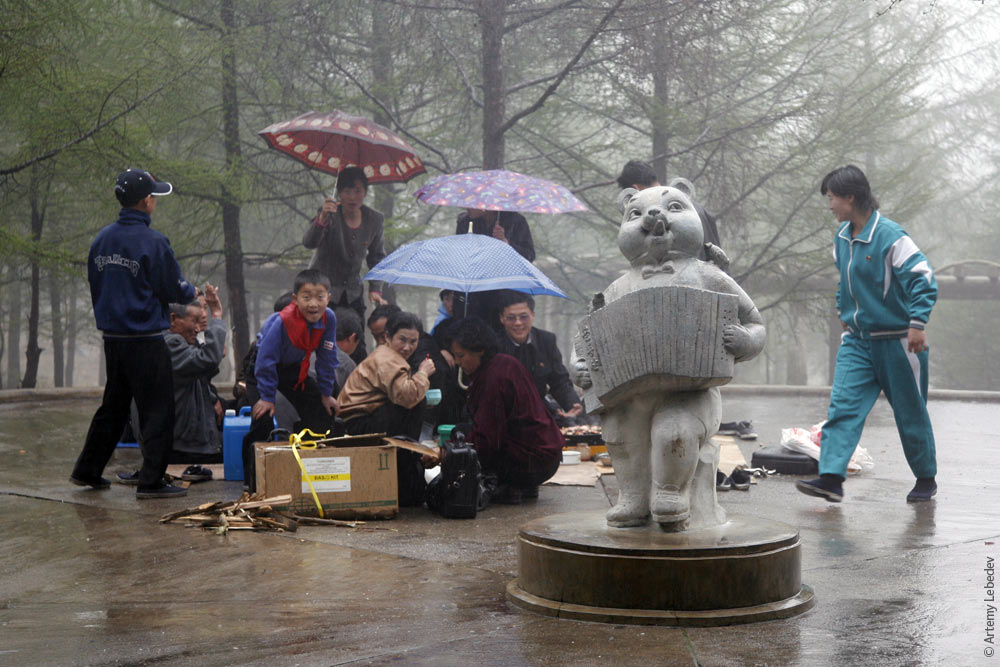 It must be said that the guide’s ideological training leaves much to be desired. Theoretically, she should have an answer, however evasive, to any question. Yet the guide has answers only to questions covered in her internal manual. Non-standard questions elicit either a change of subject or just plain silence. On the other hand, the guides have a special tactic they use during trips to other cities. As soon as the car approaches a populated place, they start asking you random questions to distract you from photographing things you shouldn’t. If we compare the details and realities of everyday life with what we know from history, it’s possible to pinpoint the time in which North Korea is living: it’s 1950. Even a well-oiled and finely-tuned time machine could hardly throw you back into the past with such accuracy. There are plaster statues on the streets here—still perfectly white, with all their limbs intact. 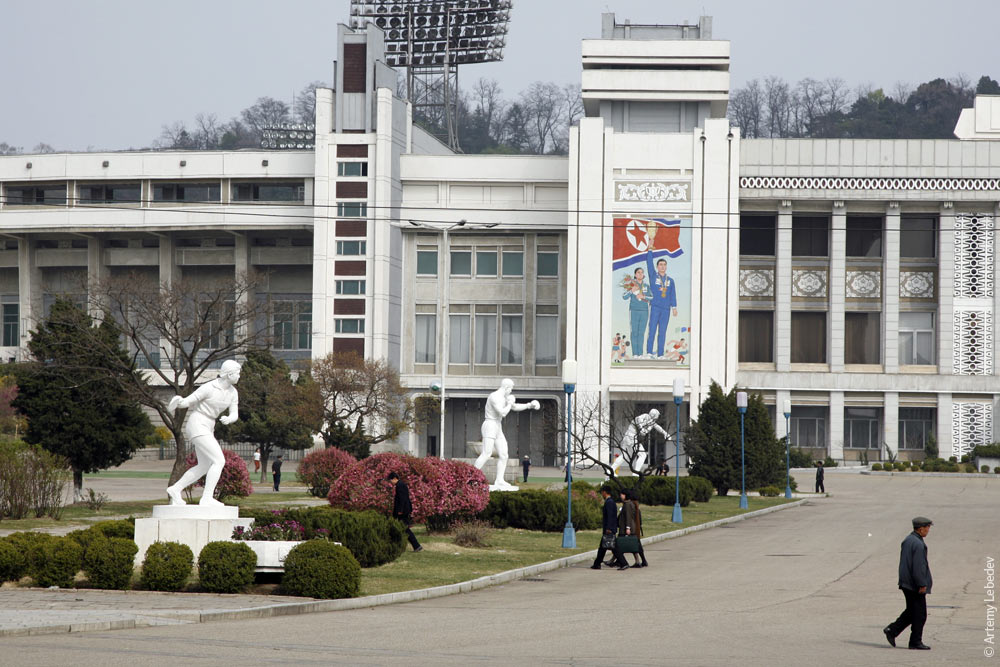 They still haven’t learned how to make smooth panes of glass without bubbles—the windowpanes are uneven in every single house. The only exception is hotel windows and large storefronts. 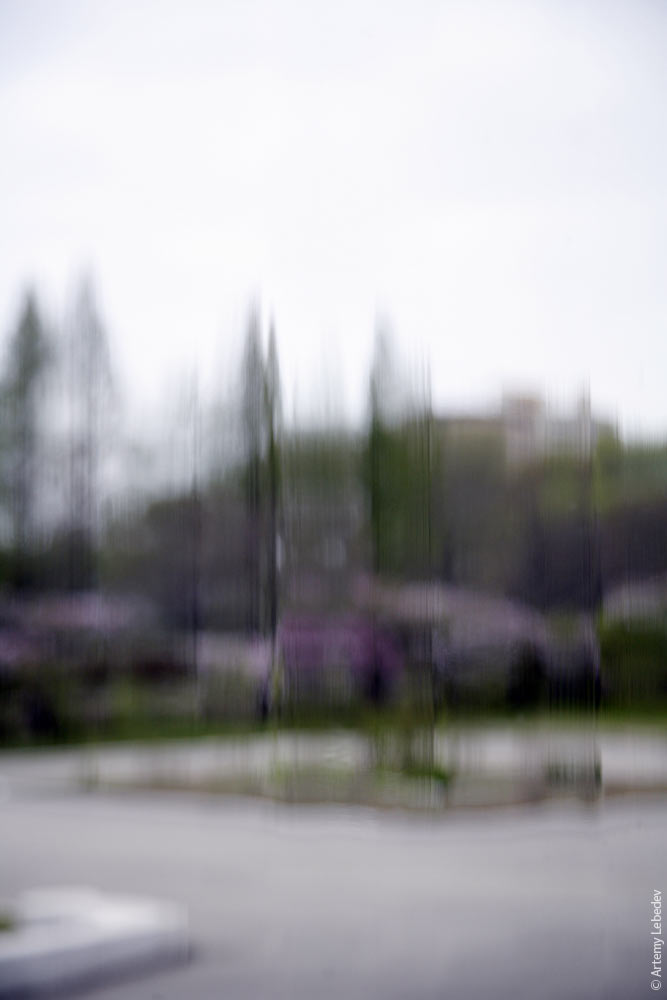 There’s barely any gasoline in the country, so most of the labor is manual. Tractors are rare and uniformly hideous. Animal-drawn ploughs are used to till the fields. 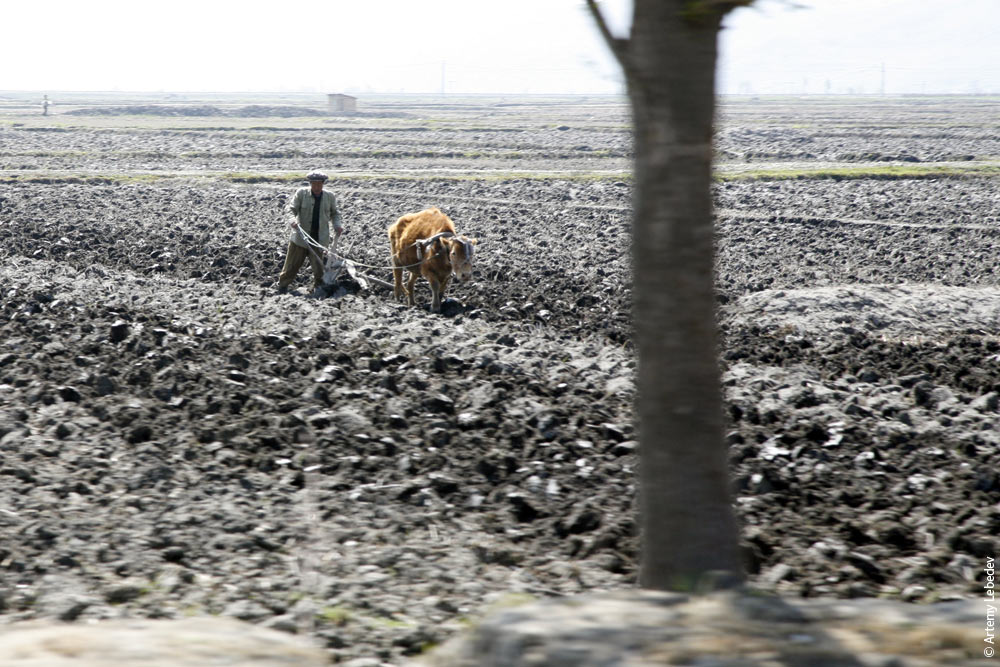 The capital appears to have running water, but in the border town of Kaesong (hardly a village, judging by the look of it), women do their washing in the river.  Life in the countryside. 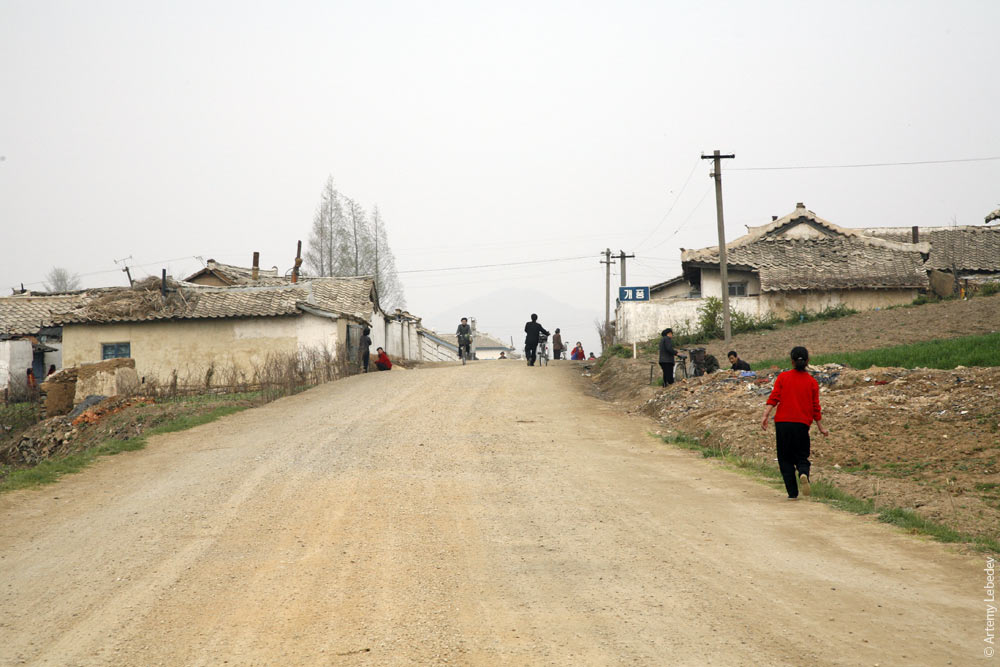 The urban planning principle is simple: line all the major roads with solid walls of panel apartment buildings. If putting up a tall building to hide the single-story houses is impossible for some reason, they put up a solid concrete fence instead, so that nothing is visible except the roofs. 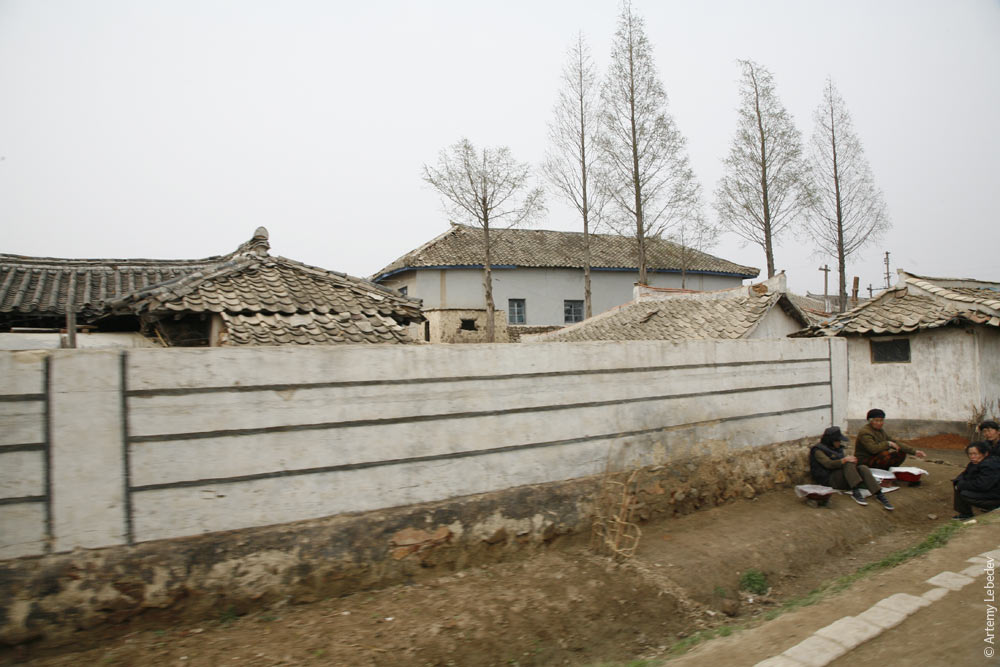 Attempts to photograph anything which differs from the pictures in Korea magazine are immediately criticized by the guide: “Why are you taking a picture of that?”, “Photography is not advisable here,” and so on. Koreans aren’t the least bit shy when it comes to calls of nature. You can often see men on rural roads pissing into the ditch, without bothering to go behind a bush. I wasn’t allowed to photograph them in the countryside, but in Pyongyang, three hundred meters away from the Tower of the Juche Idea, I was free to take pictures (look at the steps): 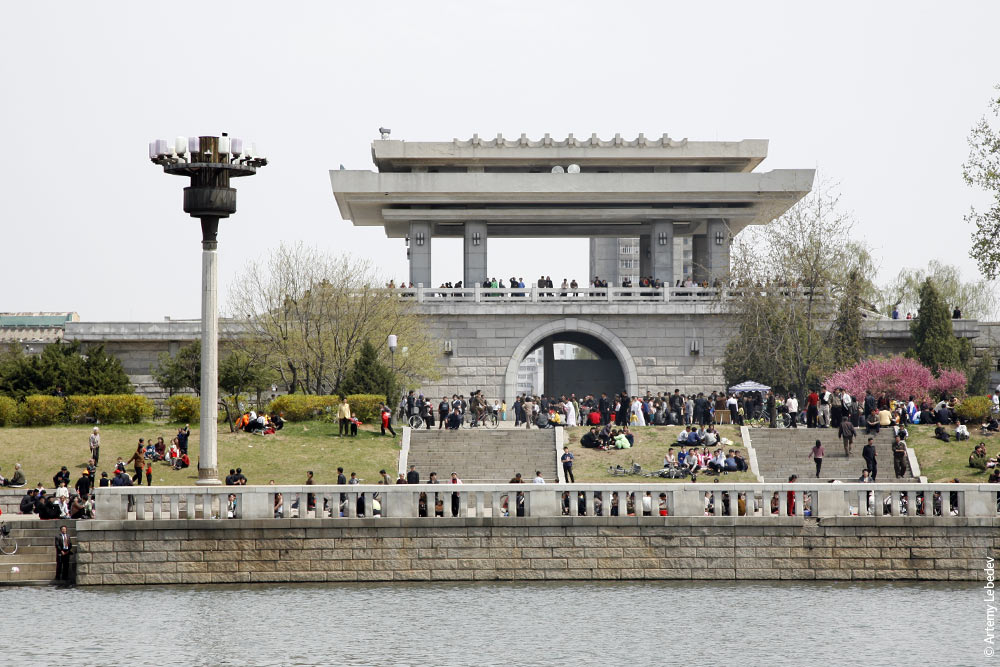 And here is the Tower of the Juche Idea itself (it costs 5 euros to go up to the fire). The core of this idea is that “man is master of everything and decides everything.” From this principle then follows the conclusion that it’s necessary to be self-reliant, and if we have an entire nation of self-reliant people, we don’t need anyone else. Thus the principle of self-reliance turns into a justification for closing the country off completely from the outside world. At 11 p.m. the electricity is shut off, and the monument stands in total darkness. 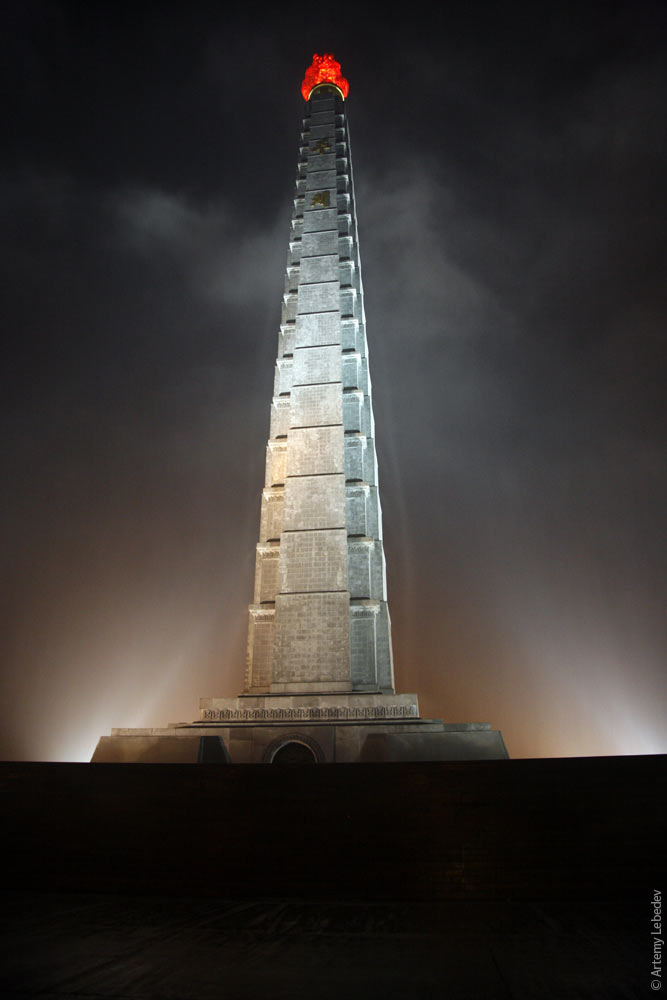 The city looks pretty creepy at night. The best analogy that comes to mind is the night sky. There are no lights on the streets, of course. The windows look like stars. The city doesn’t cast off any sort of glow. The reason for this is that incandescent bulbs are prohibited here—everyone has compact fluorescent bulbs, which give off a horrid, sterile white light (the hotel has normal bulbs, by the way). I didn’t see a single lampshade in any of the windows, just bare bulbs hanging from the ceiling. There are no curtains, either, only sheer fabric panels. This is a nighttime view of Pyongyang, which is the capital, mind you. The city of Wonsan had no lights at night whatsoever. 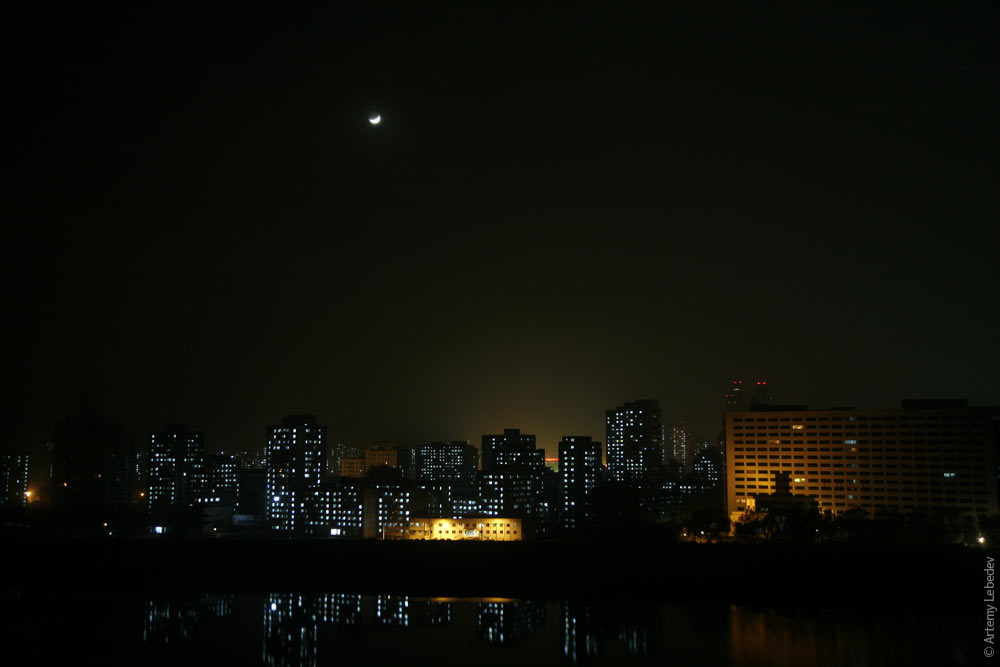 During the day, the elevator inside the Tower got stuck for 15 minutes. 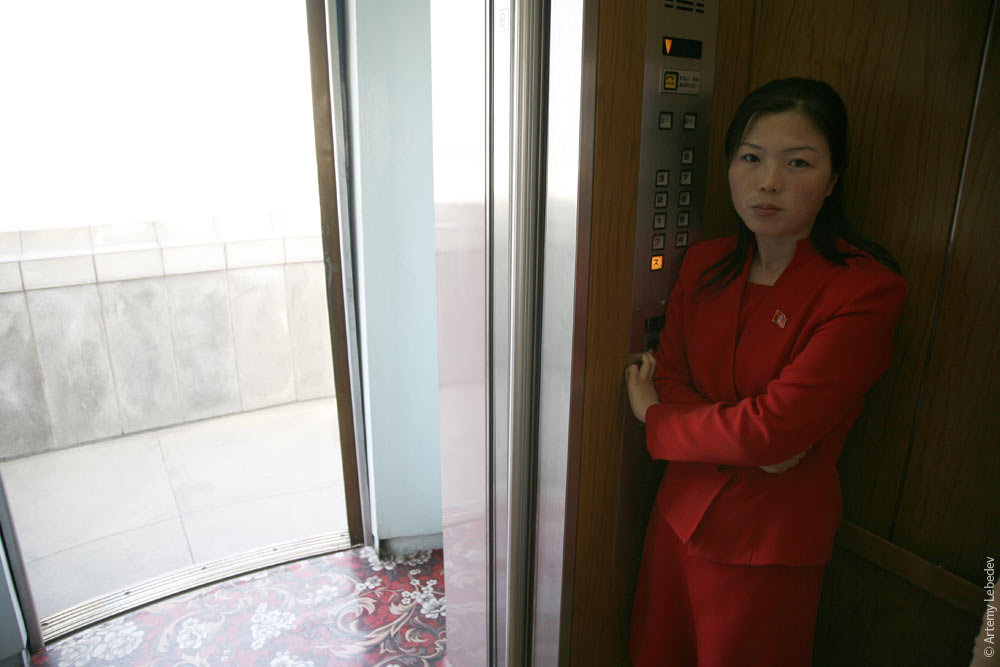 You can’t see any single-story neighborhoods from the top of the Juche Tower’s base, only a view of the worker, peasant, and intellectual (with a writing brush in his hand). 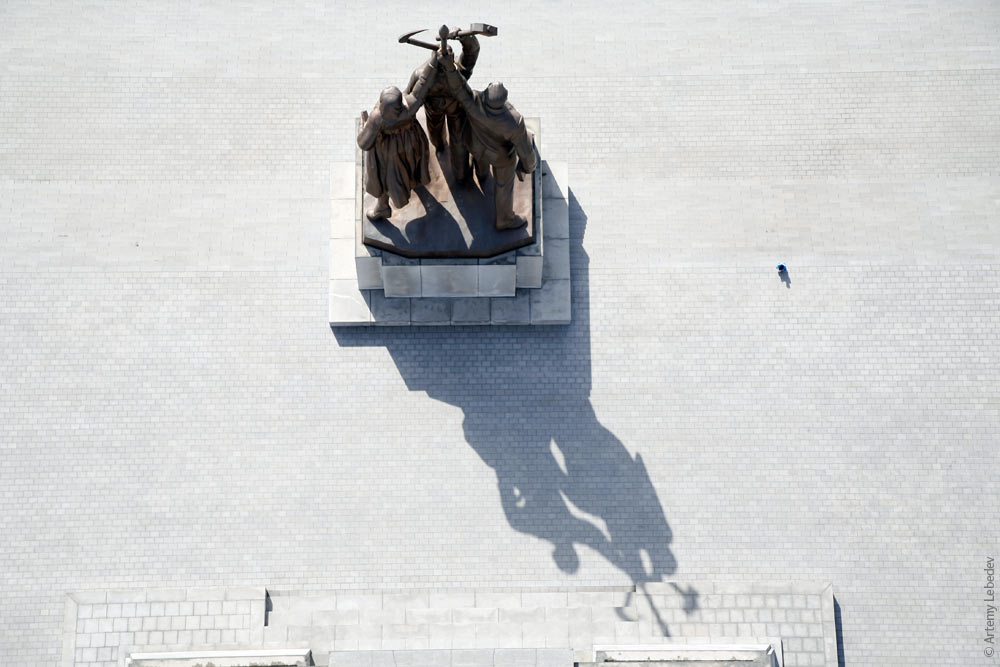 Pyongyang: 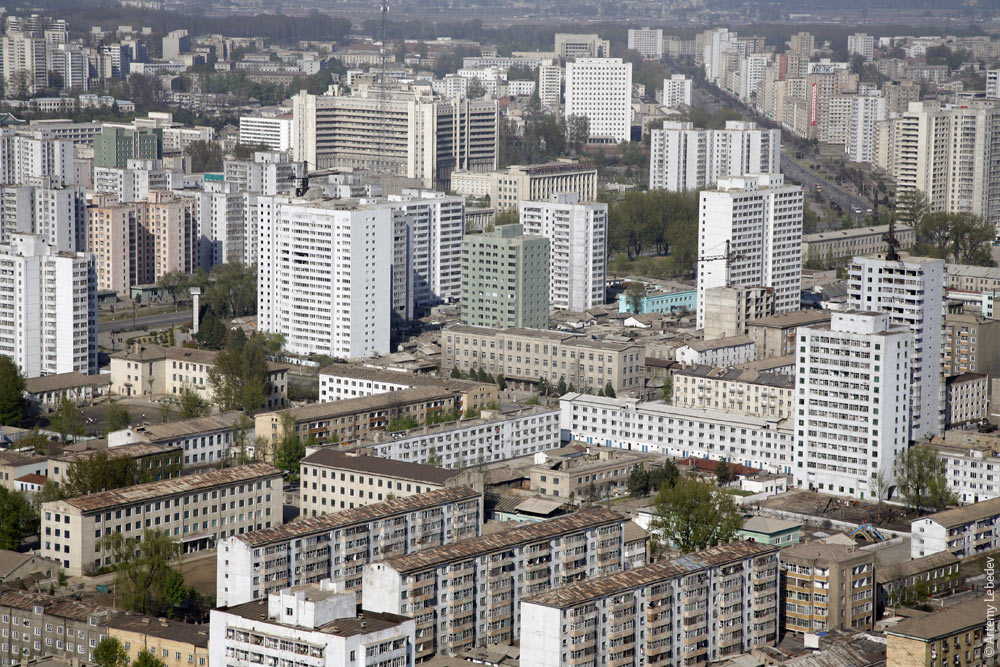 Reality can no longer be concealed from view once you get to the top of the TV tower. This is what the road along which foreigners are transported looks like (at the bottom of the picture): it’s lined with apartment buildings. Further back, however, other neighborhoods begin where no foreigner has ever set foot. 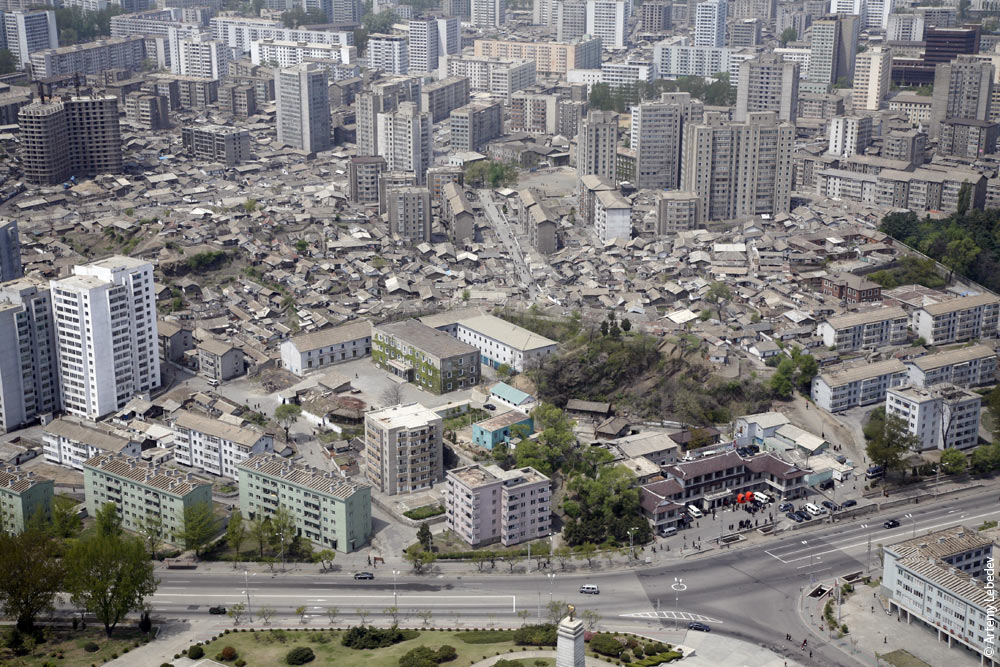 This continues all the way to the horizon. “Pyongyang—a park city.” 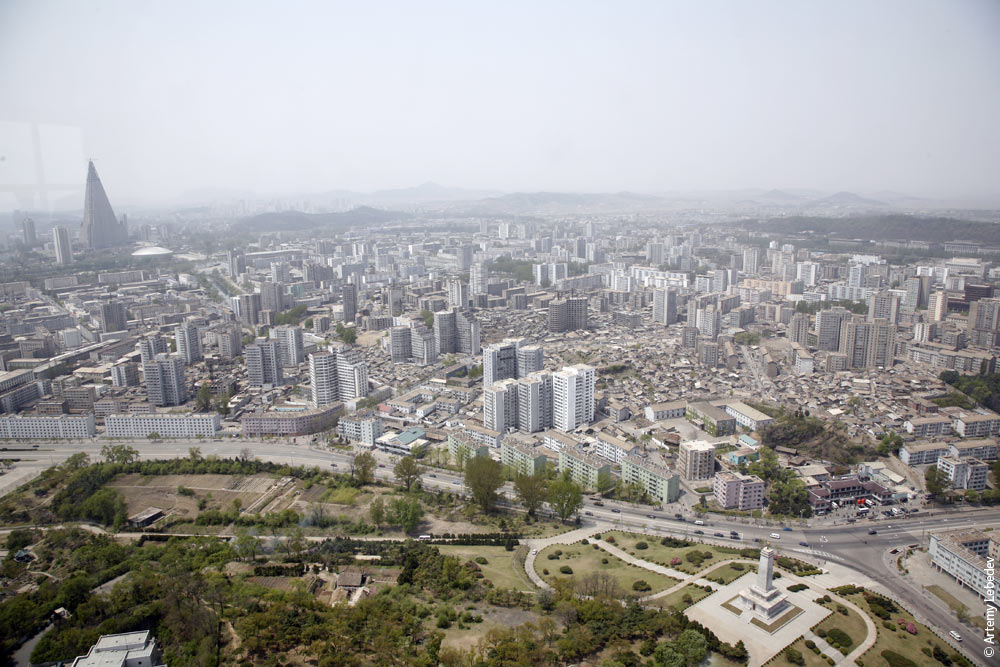 The guide tells me I can’t photograph this and explains, “Our senior citizens don’t want to move into the new buildings, they like living like this.” 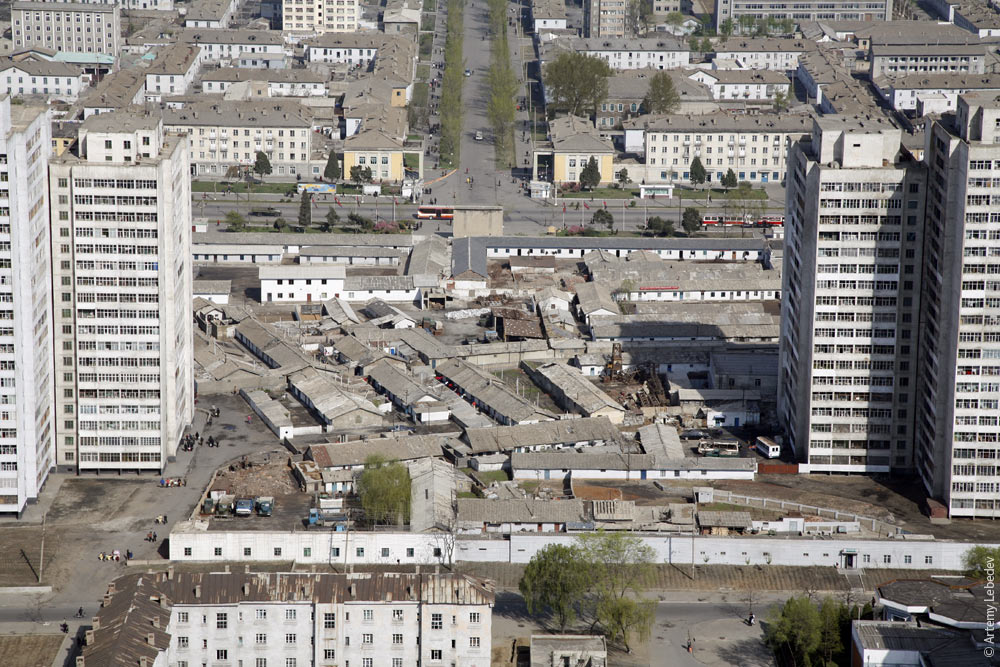 By the way, in 1997, on the third anniversary of Kim Il-sung’s death (it took them a while), North Korea declared Kim Il-sung’s birthday, April 15, the Day of the Sun and a national holiday. They also introduced the Juche calendar, which begins in 1912 (the year of his birth). It’s surprising they didn’t make April 15 the start of the new year. I was unable to get inside any of the stores where ordinary people shop. 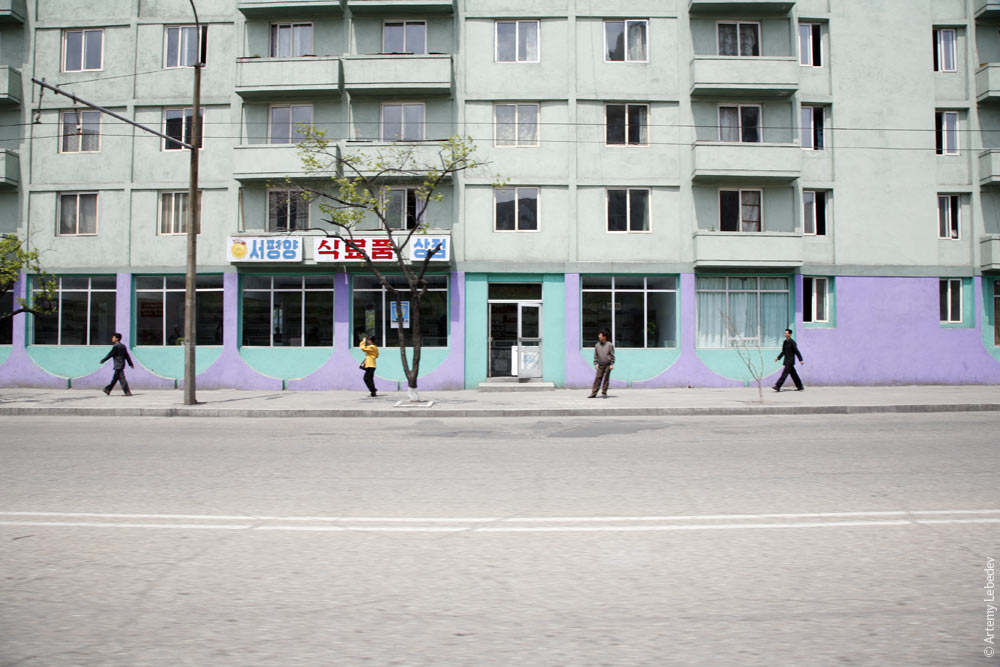 The mausoleum of the Great Leader Comrade Kim Il-sung (the Kumsusan Memorial Palace) is a whole other bastion of idiocy. 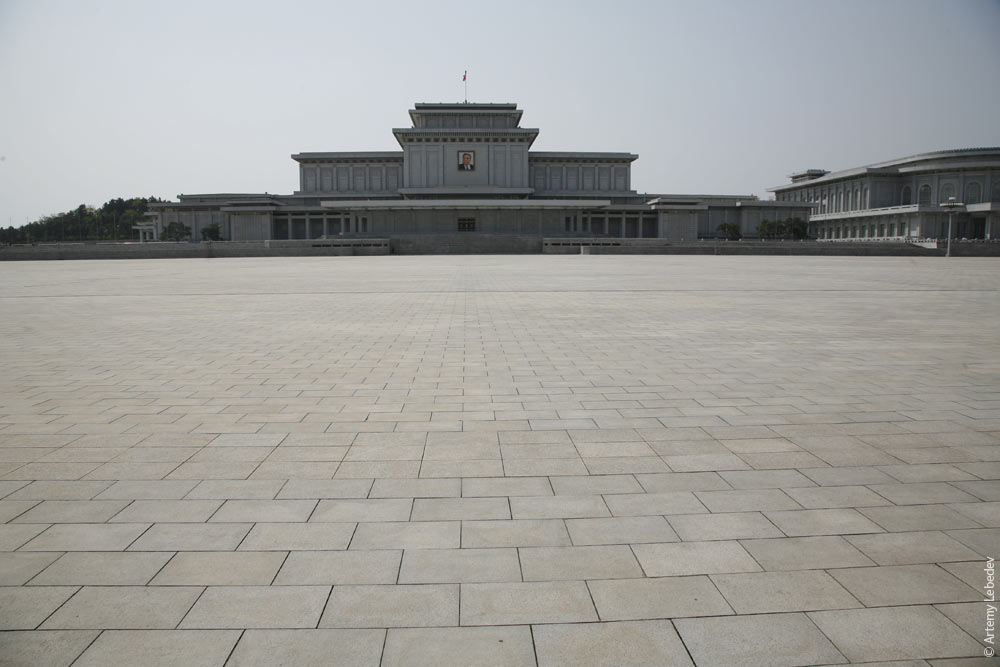 First, you have to leave absolutely everything (except your glasses and watch) at the coat check. You must be smartly dressed and fully buttoned up. You go through an X-ray (although no one actually tells you it’s an X-ray). Then through a metal detector. Then you have to ride a moving walkway for 600 meters or so. Then you take an elevator up and find yourself in a hall with a giant statue of Kim Il-sung and interesting gradient lighting (the statue is white, the background is red at the bottom and blue at the top). There’s a Wi-Fi transmitter installed over the elevators. The next room is the one with the actual mummy. People walk up to it in threes, go around clockwise, and bow on each side except the head. You’re not supposed to call this a “viewing,” it’s a “visit.” Because Kim Il-sung, like Lenin, is “more alive than all the living.” Then you go downstairs into a room with bronze reliefs depicting the grief of the Korean people over the death of the Great Leader. Here you’re handed a Sony audio guide with a recording (in my case, in Russian). I remember two phrases: “It seemed as though the terrestrial globe had decreased in mass, so great was the weight of the loss,” and that, upon learning of the Leader’s demise, “the entire Korean people cried tears of blood.” The guide spoke Russian fairly poorly. And sometimes, when she heard an unpleasant question, pretended not to speak it at all. Prior to visiting the monument of the Great Leader Comrade Kim Il-sung, you’re supposed to buy a bouquet of flowers for three euros, then put it at the base of the monument, step back, and bow. I performed all this wearing a T-shirt that looks innocent until you actually read it closely. The guide took pictures. 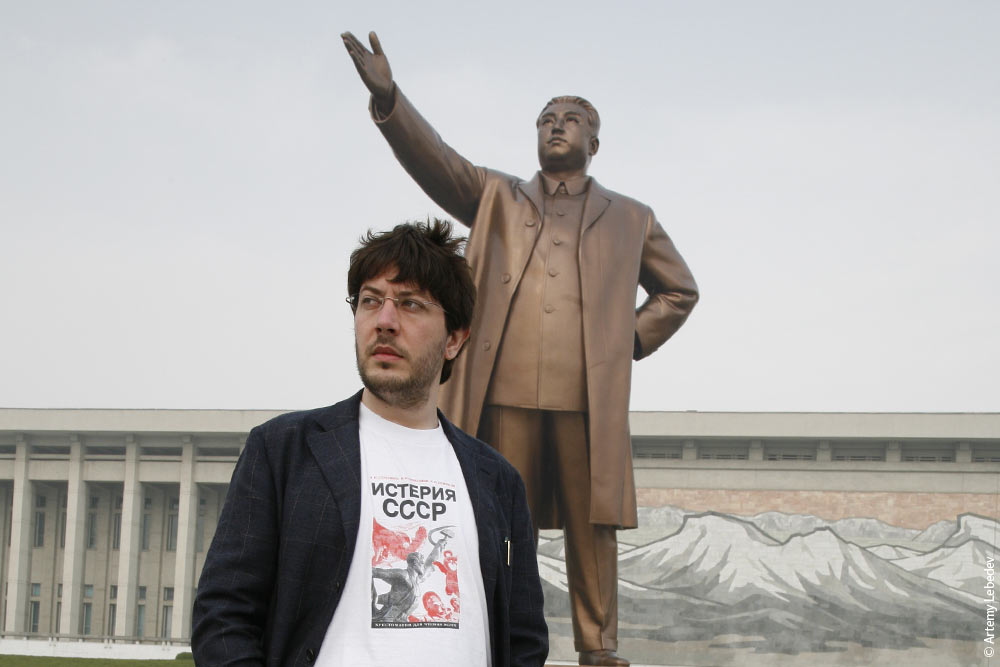 Histery of the USSR I passed the time on monotonous drives to other cities by teaching the guide and intern Russian. For example, the guide had never even heard of the expletive blya. During our lesson, I learned that the word huy (Russian for “dick”) means something like “shoo” or “scram” in Korean and is used in addressing domestic fowl. You step out onto your porch, see chickens in the yard, and start waving your arms at them, yelling, “Huy! Huy!” |